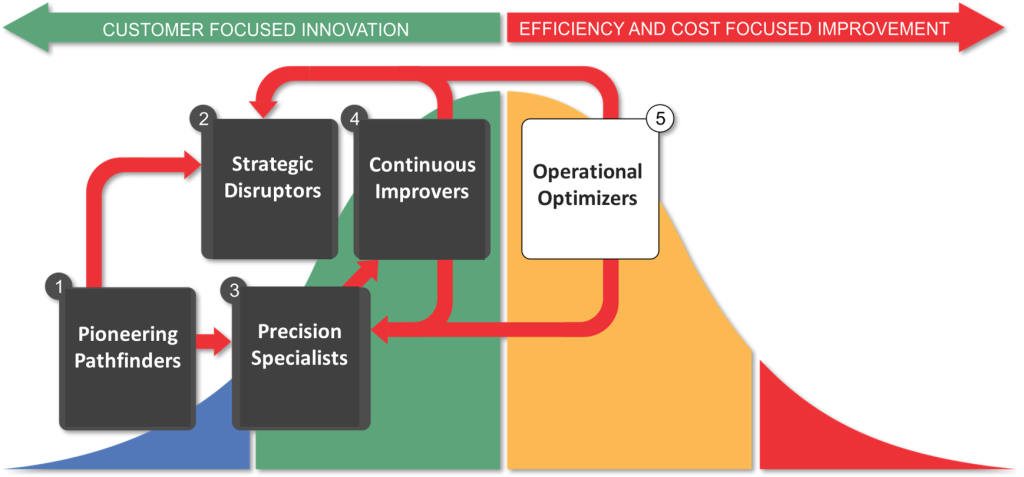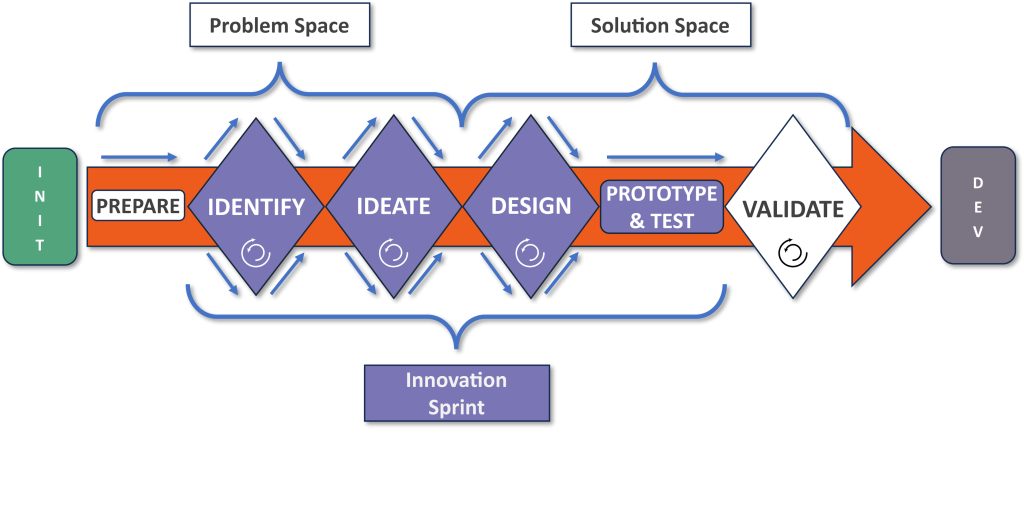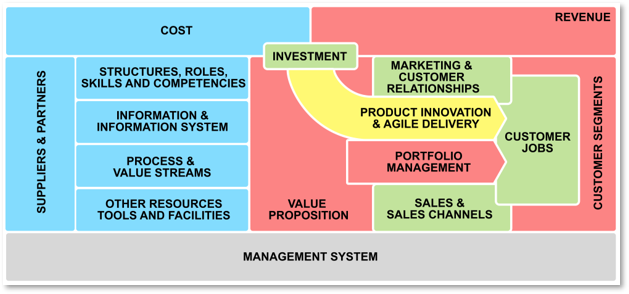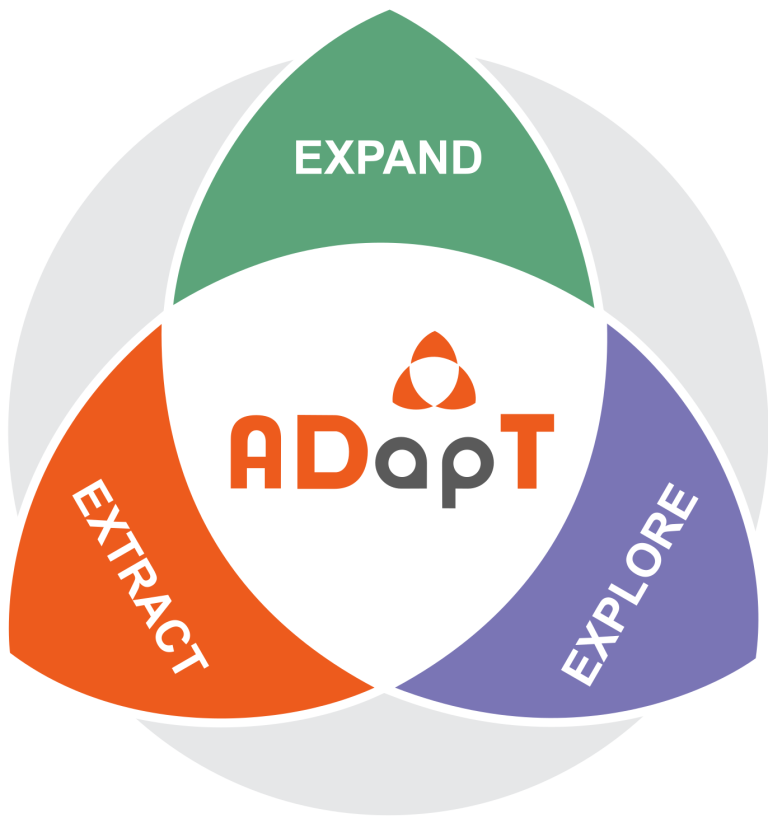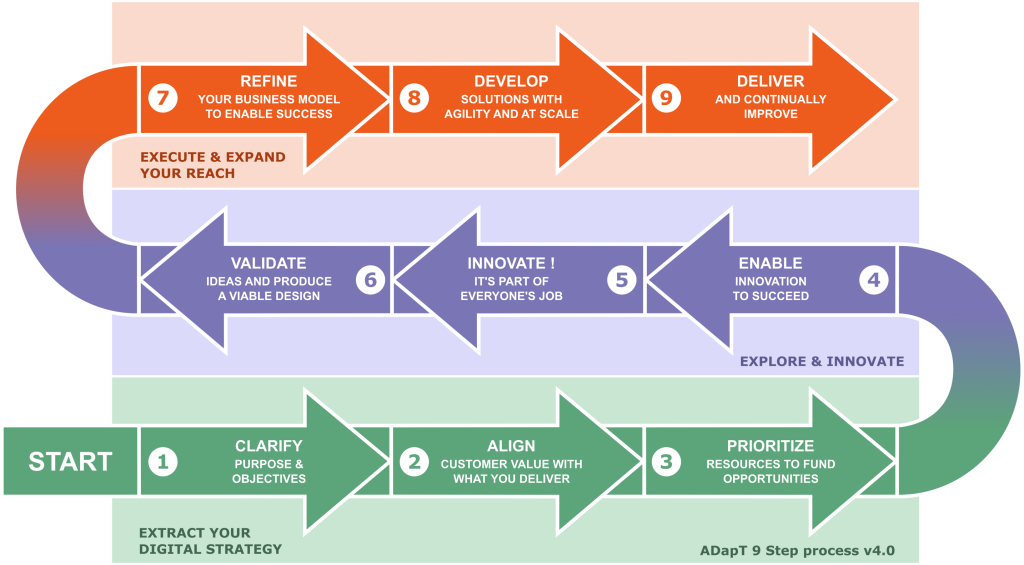
Phase 3: EXPAND – And Execute Your Reach
Refine business models, develop scalable solutions, and deliver results through continuous improvement and feedback loops.
Core Principles of Phase 3
REFINE – Your Business Model to Keep Pace With Evolving Needs and Trends
DEVELOP – Solutions That Can Scale Effectively To Stay Responsive
DELIVER – And Commit to Improve Continually
Phase 2: EXPLORE – And Innovate
Generate and test ideas through short sprints. Learn fast, validate what works, and evolve solutions based on real customer needs.
Core Principles of Phase 2
ENABLE – An Environment For Creativity and Innovation to Succeed
INNOVATE! – Make It a Strategy and Part of Everyone’s Work
VALIDATE – Your Innovation to Forward a Viable Design
Phase 1: EXTRACT– Your Digital Strategy
Set direction by reconnecting to purpose, aligning with customer value, and deciding where to focus resources.
Core Principles of Phase 1
CLARIFY – Your Purpose and Objectives to Inspire Direction and Focus
ALIGN – Customer Value With Your Purpose to Drive Meaningful Innovation
PRIORITIZE – Resources to Fund High-Impact Opportunities as They Arise
